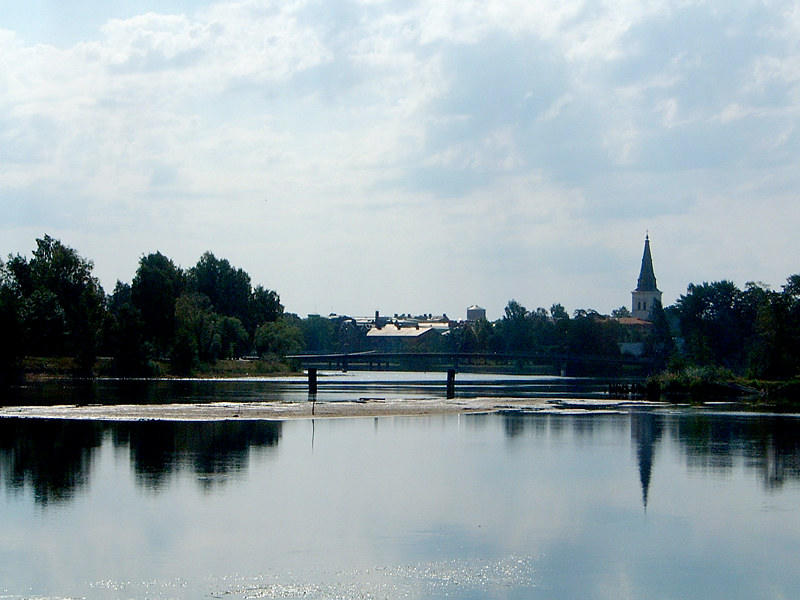Co-designing climate services to support adaptation to natural hazards: a case study from Karlstad, Sweden

Introduction
Despite a strong increase in climate change adaptation research over more than a decade, climate information is seldom used to its full potential in adaptation planning and decision-making. This gap between research and action signals that there is a lack of actionable knowledge to support adaptation decision-making.
This case study builds upon work carried out within the project HazardSupport, which ran from 2015 to 2020. The aim of the project was to develop a new, collaborative method for tailoring information about the impacts of climate change on natural hazards to inform adaptation decisions.
This new collaborative method, the Tandem framework, has been applied in two Swedish case studies of Karlstad municipality and City of Stockholm. The following case study explores how the co-design of climate services can support adaptation to multiple water hazards in the municipality of Karlstad.
*Key messages below come from the brief Co-designing climate services to support adaptation to natural hazards: two case studies from Sweden. Download the full brief from the right hand column. *See the overarching brief synthesis here. *The synthesis of the second case study on supporting adaptation to heat waves in the City of Stockholm can be accessed through this link.
Growing awareness of flood risk and identification of adaptation measure
In the Karlstad case study, the adaptation challenge in focus is flood protection of the Skåre area, located in northern Karlstad. Defining the adaptation challenge and identifying the adaptation measure have been gradual processes, in which awareness and momentum for addressing it have been growing over years.
The municipality initiated a flood protection programme in 2010 to guide planning in managing current and future flooding risks, including those related to climate change. Gradually, awareness increased that the adaptation challenge was not limited to addressing river floods, but also cloudbursts.
The adaptation challenge for Skåre reached a critical point in 2016, when flooding risks led the County Administrative Board to reject a municipality-proposed densification plan for Skåre. The municipality then realized that it “had to give the flood defence wall higher priority” (municipal officer, Karlstad) so that the lack of flood defence in the area would not hinder development.
The Tandem Framework
Whilst the steps below and the application of them in this case study remain important and relevant, the overall Tandem framework has been further updated (based on lessons learned here and in other Tandem case studies).
The Tandem framework has been developed to guide providers and intermediaries of climate information through seven iterative steps that are intended to produce relevant, actionable and sustainable climate services that meet the needs of the users of the climate information:
- Step 1 consists of identifying and defining an adaptation challenge that would benefit from the use of a climate service.
- Step 2 focuses on identifying and engaging with potential users of a climate service.
- Step 3 involves co-defining the desired objectives of a climate service, and reviewing advantages and shortcomings of existing services.
- Step 4 entails gaining an understanding of the institutional and decision contexts in which the climate service will be embedded.
- Step 5 guides providers and users of the climate service in co-exploring data and information needs, including their sources, formats and modes of dissemination.
- Step 6 consists of appraising adaptation measures, in which decision-support methods may be used to identify, evaluate, prioritize and sequence interventions.
- Step 7 ensures that the climate service is used in practice by embedding it in existing institutions, and ensuring that mechanisms are in place for maintaining, evaluating and upgrading the service as appropriate.
Co-exploration of climate data and information needs
As part of the HazardSupport project, the Stockholm Environment Institute (SEI) and the Swedish Meteorological and Hydrological Institute (SMHI) engaged in discussions with representatives from the Karlstad municipality in conjunction with the increased priority given to addressing Skåre’s flood protection.
The municipality identified a need for tailored information to assess whether the proposed flood defence wall would indeed be effective in a future climate, including under scenarios with multiple extreme events of simultaneous river flooding and cloudbursts.
Initial discussions focused on articulating the adaptation challenge and exploring the institutional context (corresponding to steps 1-4 in Tandem). Subsequently, SMHI presented a set of proposed alternative climate services. Based on these alternatives, the municipality sought estimates of water amounts and flows for defined scenarios (incorporating possible extreme events) to meet legal requirements. (This iterative dialogue to define data needs corresponds to Tandem Step 5.)
To meet this need, SMHI assessed current and future conditions using a hydraulic model that included the proposed flood defence wall. Maps showed the flooded areas of Skåre under different scenarios of the model.
Using climate information to appraise and plan adaptation measure
The modelling results from the climate service showed that the flood defence wall would indeed be effective to prevent river flooding, and would not cause unmanageable flows in the event of cloudbursts.
Find the key messages from the project in the overarching brief synthesisSuggested citation
André, K., Järnberg, L. and Gerger Swartling, A. (2020). Co-Designing Climate Services to Support Adaptation to Natural Hazards: Two Case Studies from Sweden. DOI:10.13140/RG.2.2.22687.30882.
Further reading
Related resources
- Co-designing climate services to support adaptation to natural hazards: a case study from Stockholm, Sweden
- Co-designing climate services to support adaptation to natural hazards: two case studies from Sweden
- Synthesis - Co-designing climate services to support adaptation to natural hazards: two case studies from Sweden
- Improving the co-production of climate services for agriculture: a case study from Nigeria
- Refocusing the climate services lens: a framework for co-designing “transdisciplinary knowledge integration processes"
- Presentation of the Tandem framework
- Tandem online guidance
- A framework for Nordic actor-oriented climate adaptation research
- HazardSupport project
- Ten ways to support climate change adaptation planning and decision-making
(0) Comments
There is no content